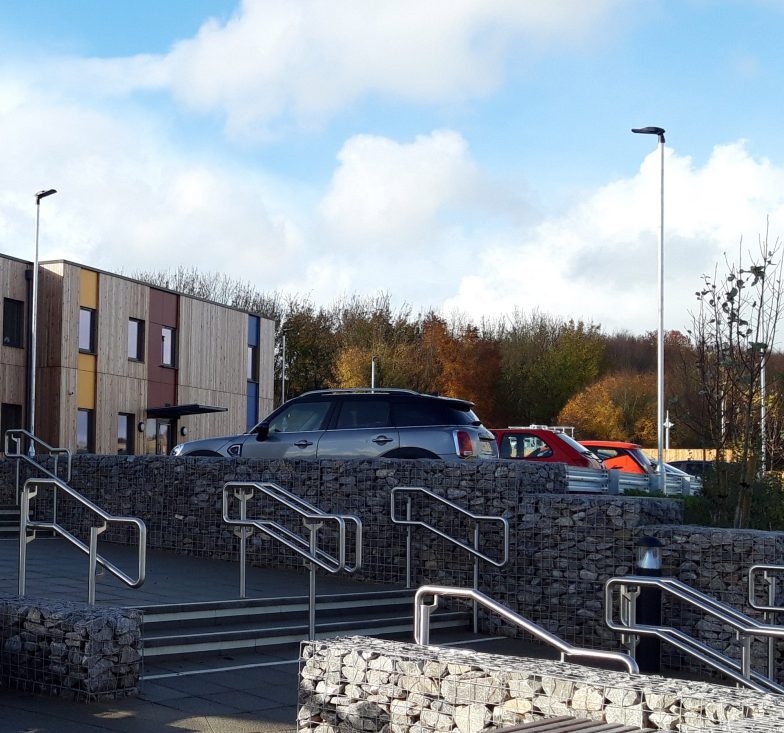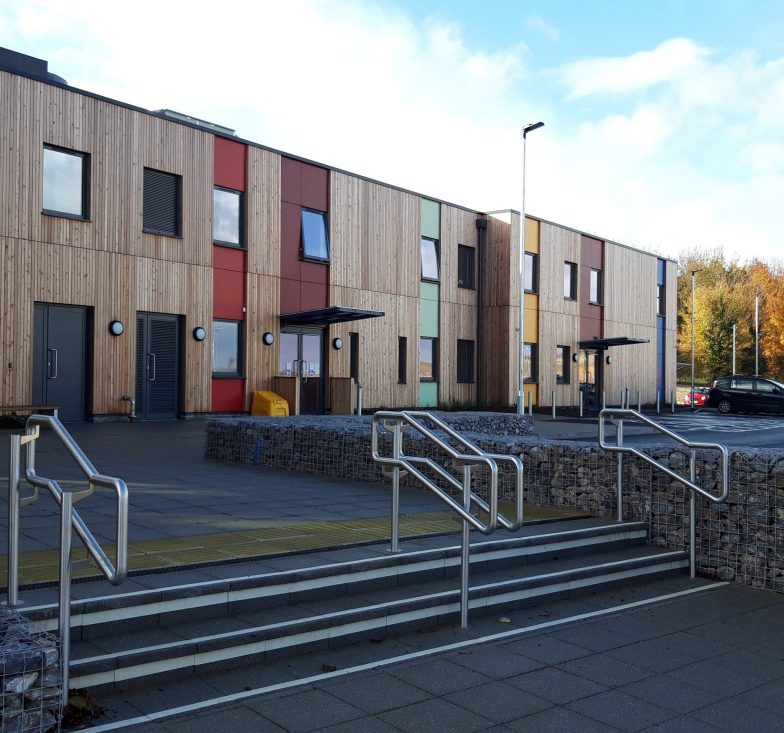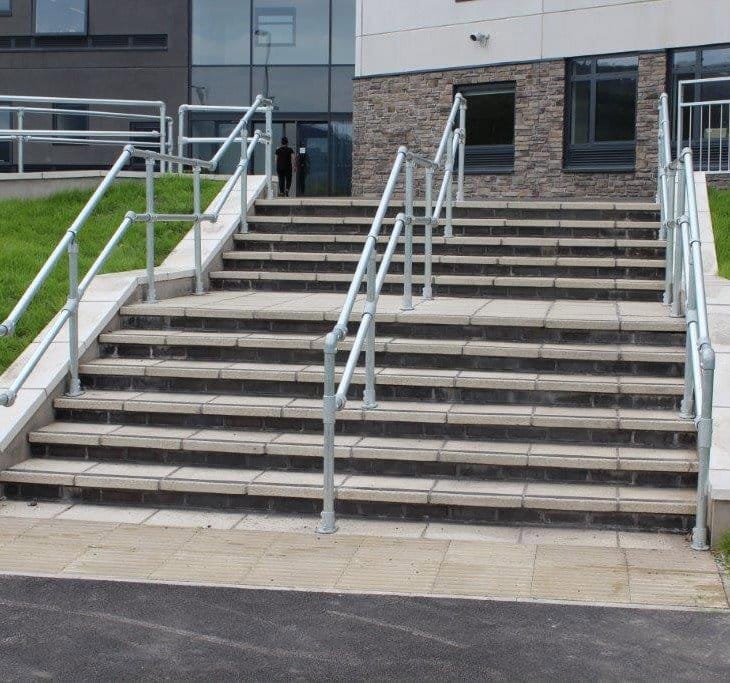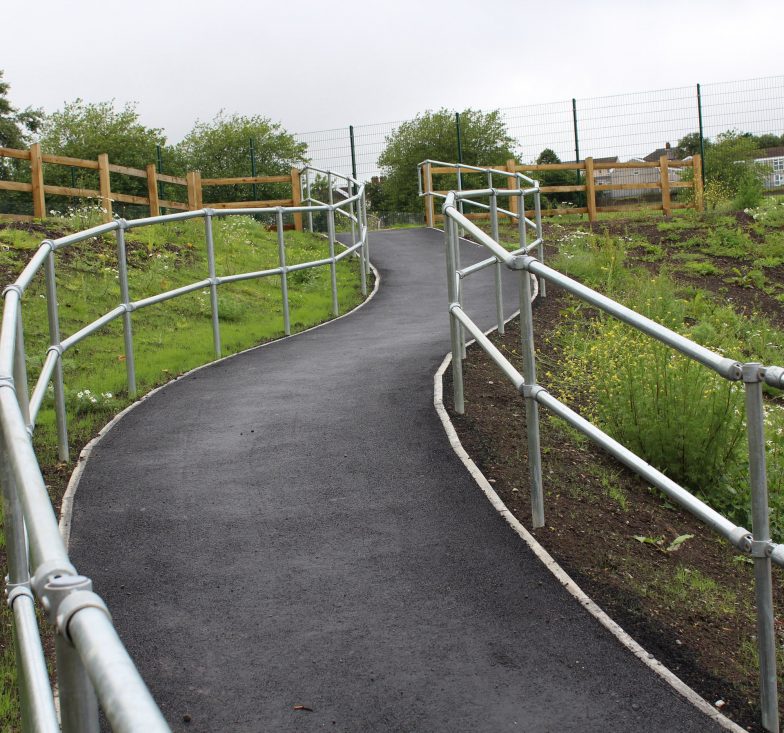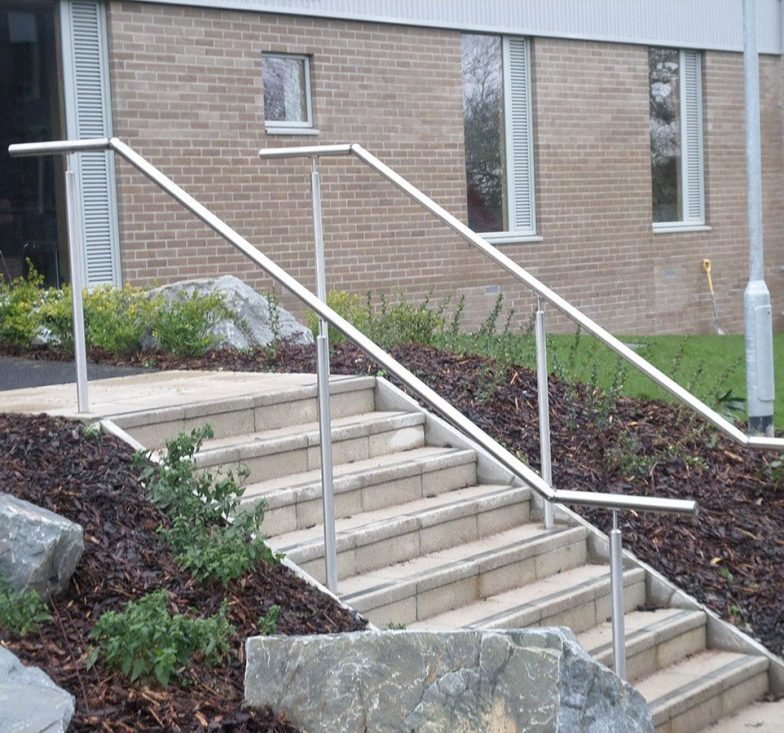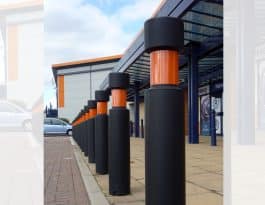Handrails
A particular area of expertise for us is stainless steel handrails. Architects and their clients often overlook stainless steel handrails for external applications because of concerns about discolouration caused by mild corrosion. In fact, we can avoid such problems entirely by treating the stainless steel with either passivation or electro-polishing as part of the production process prior to installation.
Stainless steel handrails from Procter can be used on projects with complete confidence that they will not show signs of corrosions, and instead will remain looking just as they should do
Enquireor call 0800 2944177
We can also produce mild steel handrails with a galvanised finish or, if required, we can also apply powder coating in your choice of colour.
Downloads
Stainless steel handrails have a protective outer which is referred to as the oxide layer. This oxide layer is enriched with chromium oxide and gives a very high degree of resistance to corrosion. However, this resistance is reduced if the steel is not treated in the right way ahead of installation, with the result often being ‘tea staining’ and even slight rusting. These are the results of the protective oxide layer is partly removed, and this by heat or mechanical processes including welding, polishing and grinding. In addition, if given time to develop in a stable atmosphere, stainless steel will develop a degree of its own protection. So if not given that time and also if the steel is not treated with the right processes in the creation of a product such as a handrail, it will inevitably go on to develop unsightly signs of corrosion – and often in a relatively short period of time.
Procter stainless steel handrails have two treatments for the finish to ensure that corrosion is avoided and the handrail remains looking as it should:
- Passivation. This involves a relatively simple chemical process that instantly restores the protective oxide layer to the surfaces of the stainless steel after it has gone through a manufacturing process such as welding or grinding. The process does not negatively change the appearance of the steel and is also fully compliant to the ASATM A 967specification.
- Electro-polishing. This is a process which provides the ultimate protection to stainless steel surfaces and results in the material being up to thirty times more corrosion-resistant than other processes. As the name suggests, the method is carried out by electrolysis and removes a very small amount of material, with the resulting chemical reaction creating an extremely to ISO 15730, and is certainly what we would recommend for marine applications where salt water would be a problem without the treatment. This process does make the appearance of the stainless steel somewhat brighter, though the degree of this can be controlled during the procedure.
Request a quote
or call us on 0800 2944177

